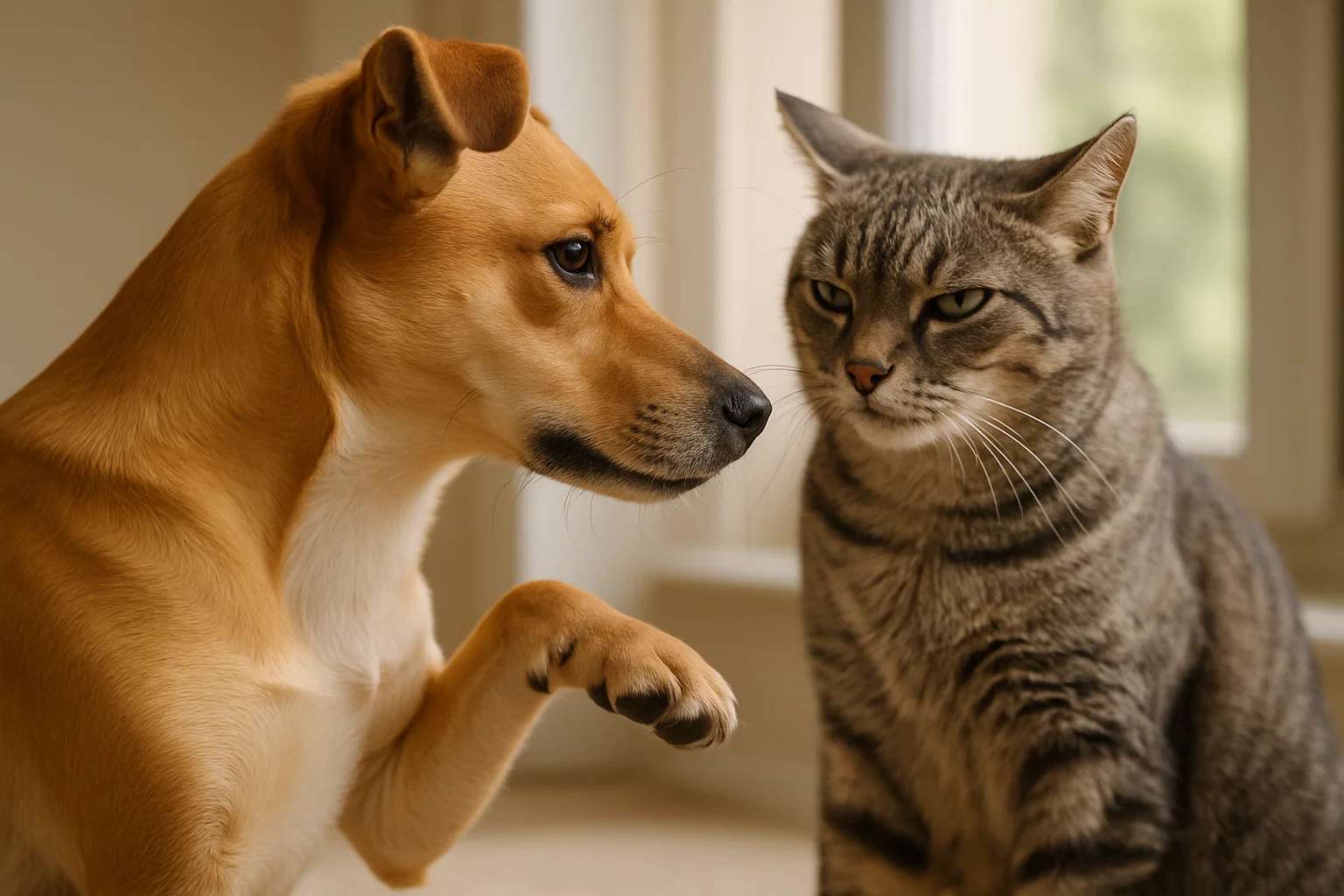Our pets are constantly “talking” to us without saying a word. Every tail wag, ear flick, and posture shift can tell a story about how they feel, what they want, or what they fear. Learning to read this silent language not only strengthens bonds but also helps prevent misunderstandings and stress. By tuning into these subtle signals, we can respond appropriately, keeping our pets happy, healthy, and safe.
1. Tail Wagging Isn’t Always Happiness

A wagging tail doesn’t automatically mean joy or friendliness. Dogs may wag slowly when cautious or hold a stiff wag when feeling threatened. Fast, loose wags often indicate excitement, but direction matters too—right-side wags can mean positive feelings, while left can indicate unease or discomfort. Cats may swish their tails when agitated or overstimulated during play. Observing the rest of the body alongside the tail helps decode true intent accurately in different situations.
2. Ears as Mood Indicators
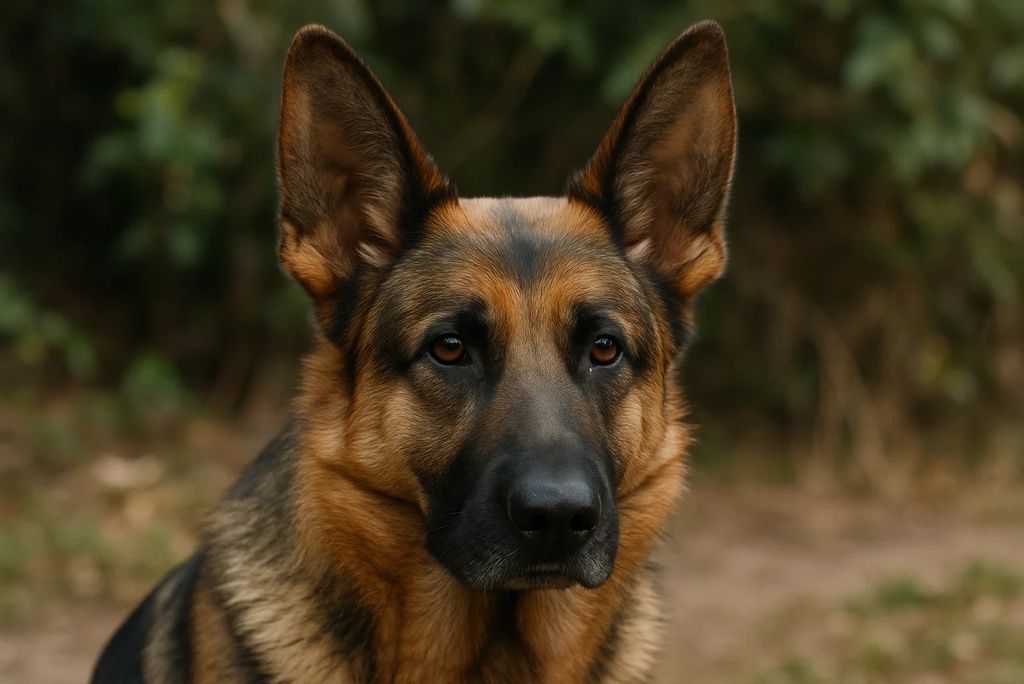
Ears pulled back in dogs can mean fear or submission, while perked-forward ears may signal interest or alertness. Cats with flattened ears might be angry or scared, especially when paired with a tense body posture. Breeds with floppy ears show changes more subtly, so watch muscle tension at the base. In multi-pet households, reading ear cues can prevent fights and improve harmony. Ear position, combined with facial expression, is key to reading mood.
3. Eye Contact and Blinking
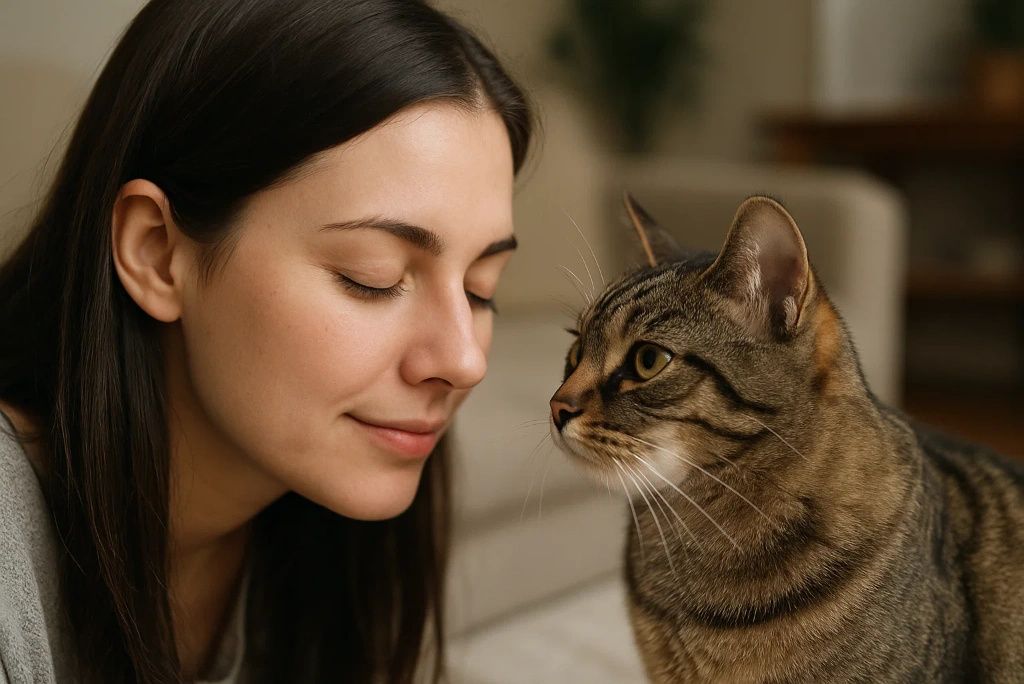
Soft, relaxed eye contact shows trust, while a hard stare can signal a challenge or threat. In cats, slow blinking is often affectionate—returning the gesture can strengthen your bond. Dilated pupils can signal fear or excitement in both dogs and cats, depending on the context. Observing blinking speed and eye softness over time helps you learn each pet’s unique comfort signals, creating a safer and calmer environment.
4. Lip Licking and Yawning
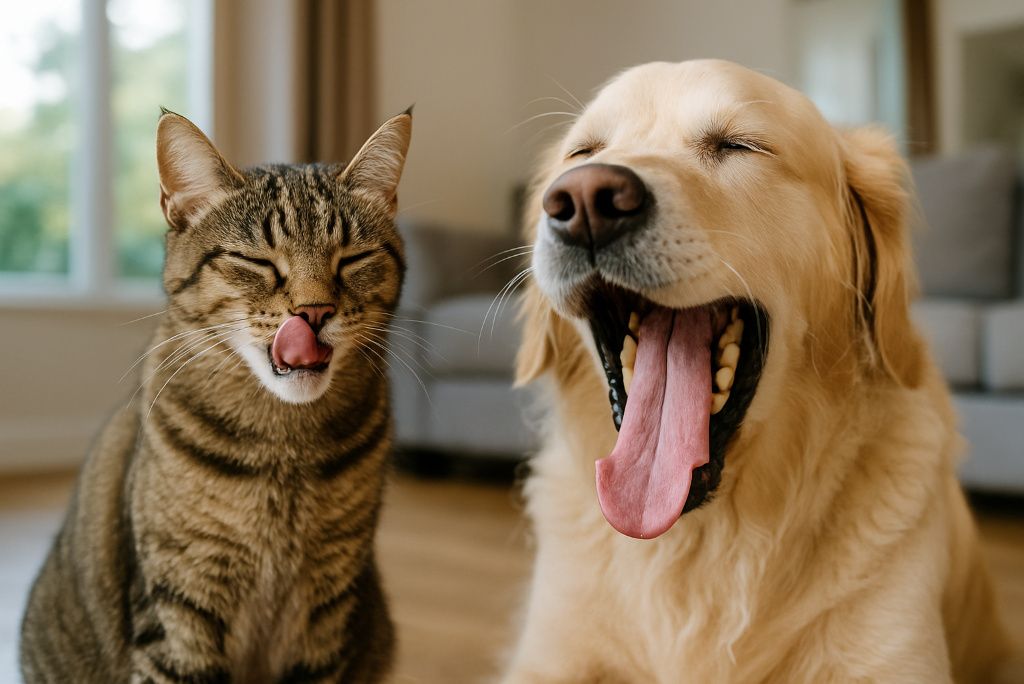
Outside of mealtimes, dogs may lick their lips or yawn as a stress signal, especially during unfamiliar social situations. Cats may lick their lips before grooming, but repeated, rapid licking during social interactions can indicate anxiety or conflict avoidance. Both species may yawn to release tension, not just fatigue. Recognizing these subtle cues can prevent escalating stress during vet visits, training, or introductions to new animals.
5. Posture and Weight Distribution
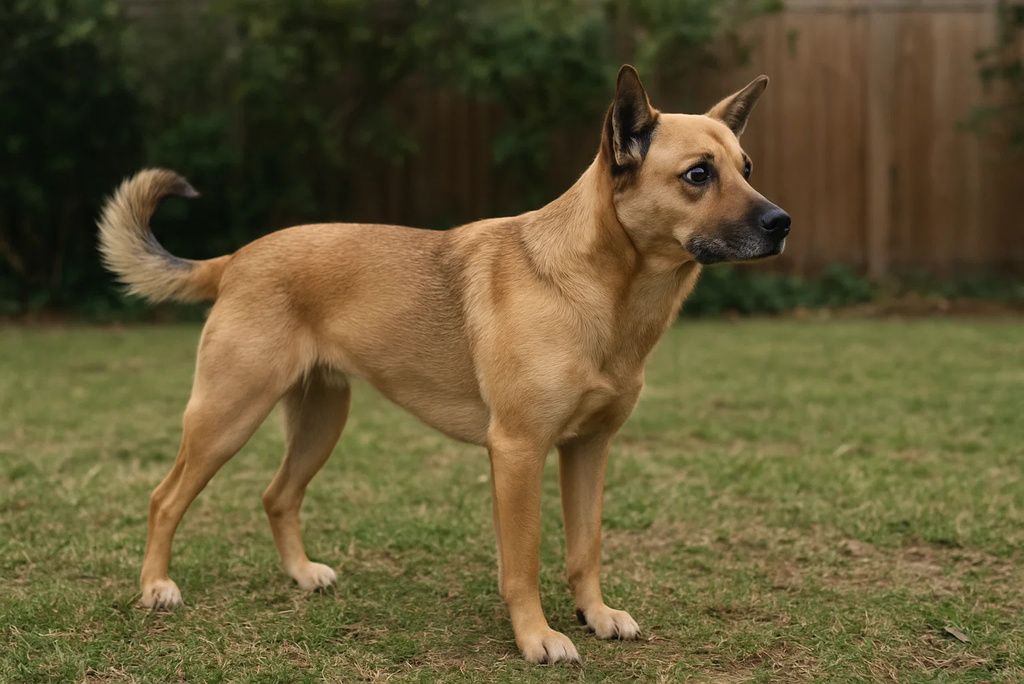
A dog leaning forward might be curious or ready to act; leaning back often shows hesitation or uncertainty. Cats arching their back with puffed fur are frightened or defensive, while a low crouch can signal readiness to pounce or fear. Balanced weight distribution usually indicates relaxation. Watching for subtle shifts in stance can help you intervene early if tension or aggression is building between pets.
6. Vocalizations and Tone
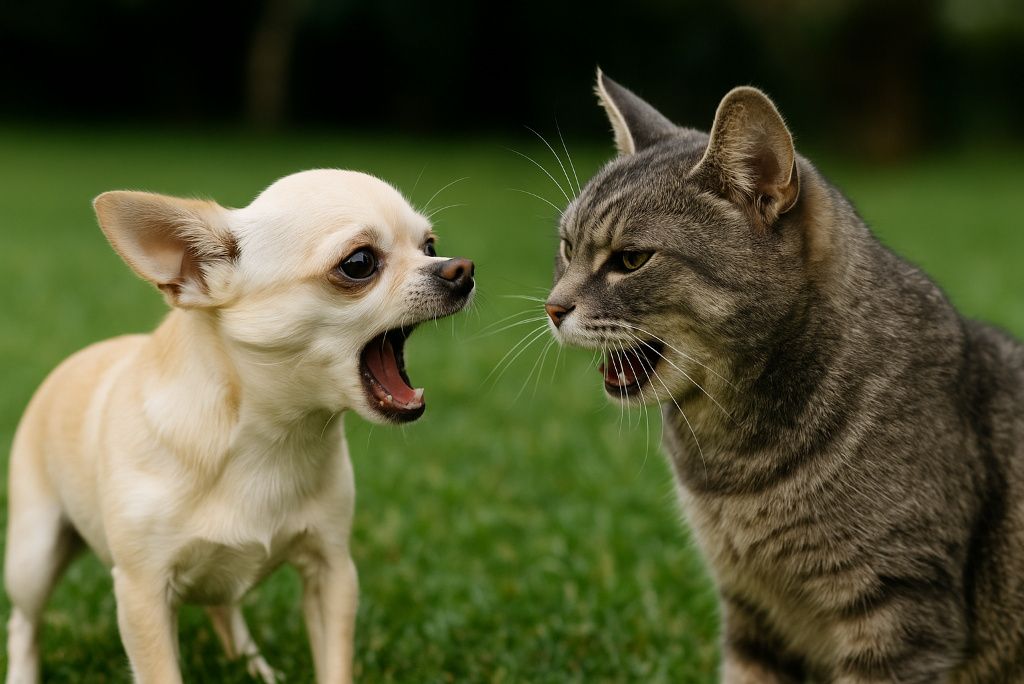
Whining, growling, and barking have different pitches and durations that can indicate excitement, fear, or warning. Cats’ meows vary from chirps of greeting to drawn-out yowls of discomfort or heat cycles. Listening for tone, repetition, and context helps interpret emotional state. Recording your pet’s sounds can even help identify health changes, as sudden vocal shifts may signal pain or illness.
7. The Freeze Response
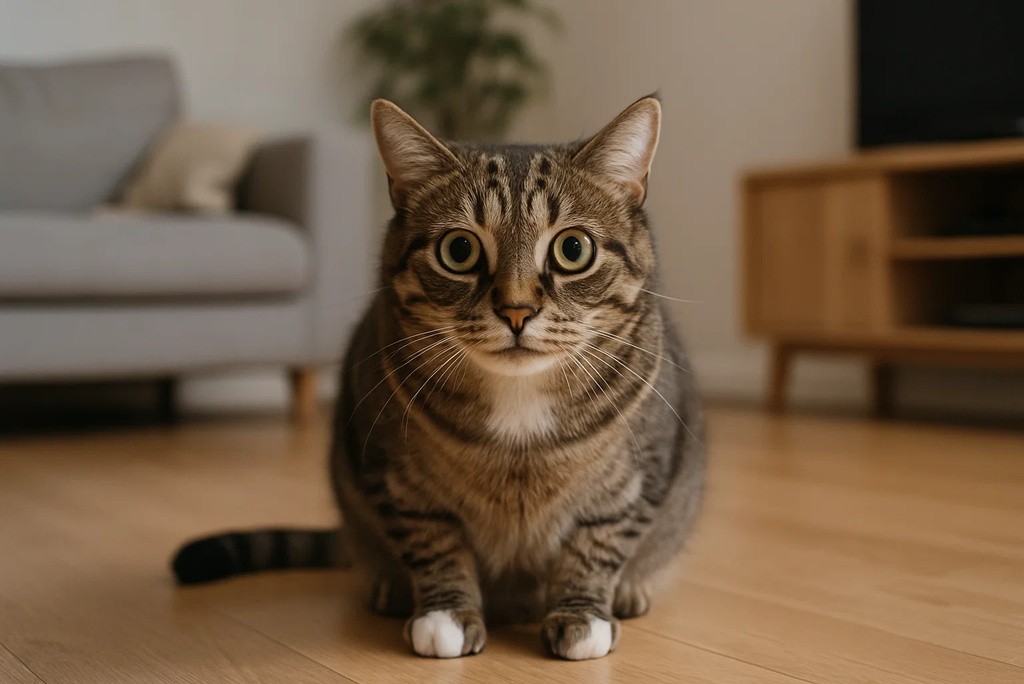
Freezing mid-action is a warning sign and should not be ignored. Dogs may pause before reacting aggressively or retreating, often giving one last chance to back off. Cats may freeze before bolting or swatting. This “pause” often precedes a decision—approach cautiously, if at all. Understanding this moment can prevent bites, scratches, or fear-based escalations in both home and public settings.
8. Belly Display

A dog rolling onto its back could be showing trust or submission, but if tense and stiff, it might be defensive or fearful. Cats showing their belly are not necessarily inviting touch; they may be stretching, cooling off, adjusting position, or preparing for a defensive kick. Recognizing the difference between relaxation and guardedness can prevent injury and build mutual respect in safe, gentle handling.
9. Fur and Skin Signals
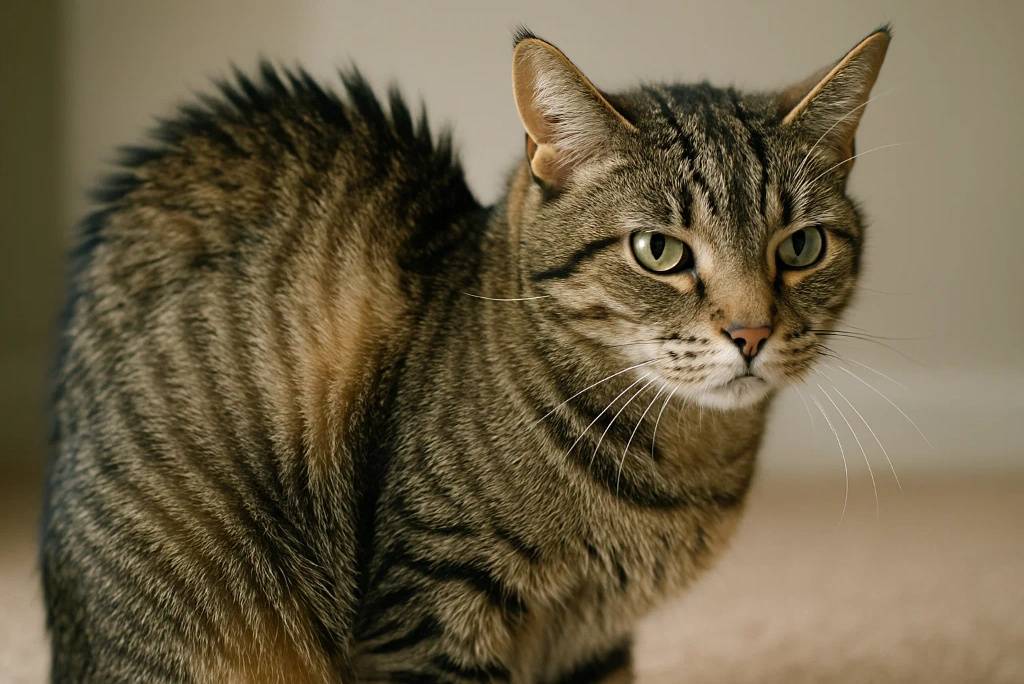
Raised hackles in dogs (piloerection) can mean arousal, fear, or excitement—context is key to knowing which. In cats, puffed tails and arched backs are classic fear displays, often accompanied by hissing and defensive posturing.
Skin twitching in cats can also indicate irritation, overstimulation, or even underlying skin conditions. Monitoring these changes closely during grooming, play, or vet visits helps you avoid overstimulating your pet and ensures timely intervention when discomfort or distress signals appear.
10. Play Bows and Invitations

Dogs often stretch their front legs forward, rear high, and tails loosely to signal play, sometimes barking in short bursts. Cats may approach with a sideways hop, pounce, or gentle paw tap when inviting play, though their invitations are often subtler and shorter in duration. Matching their play style and energy level keeps interactions positive and prevents accidental injury.
11. Grooming as Comfort
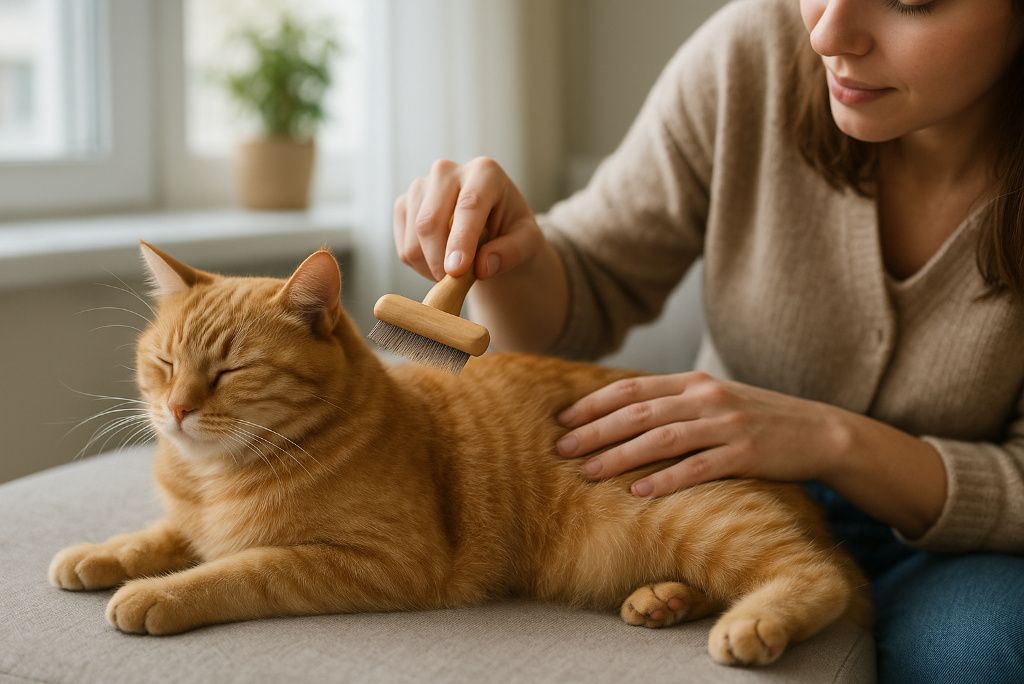
Over-grooming in both cats and dogs can be a sign of stress, anxiety, boredom, or medical issues like allergies. Gentle, slow grooming is usually relaxing, but repetitive licking in one spot can cause hair loss or sores. Changes in grooming habits, especially reduced self-care, may also signal illness or pain. Addressing environmental stressors can help reduce excessive grooming.
12. Sniffing and Turning Away
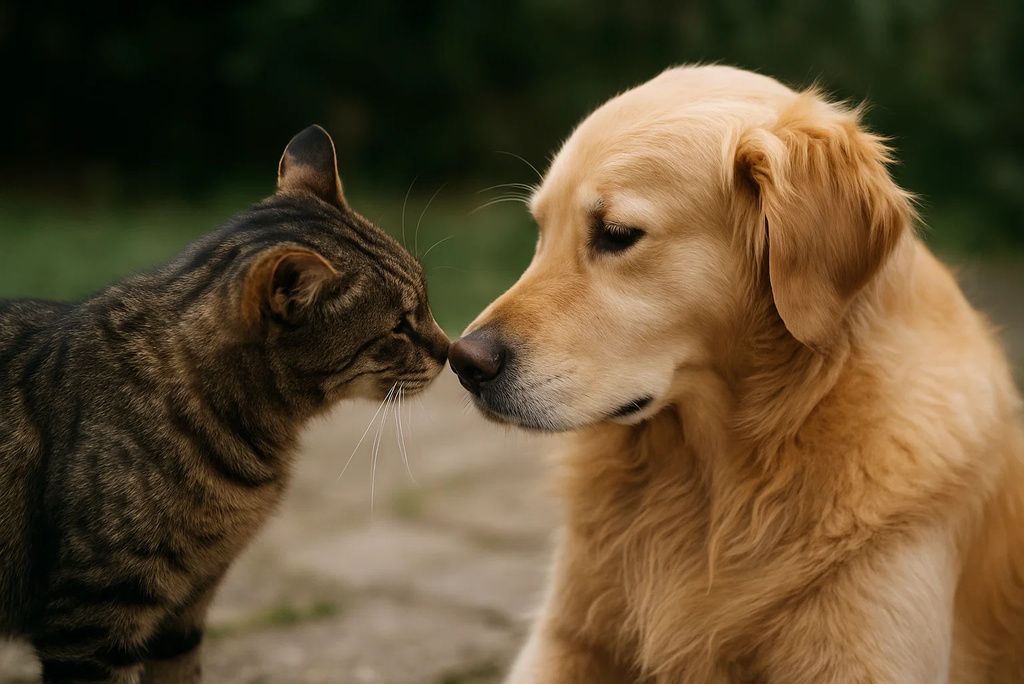
Sniffing the ground or turning away during interactions can be a calming signal, showing a pet is trying to diffuse tension or avoid confrontation. Dogs often do this when approached too quickly or by dominant animals. Cats may use a slow head turn or pretend interest in their surroundings to signal peaceful intent. Respecting these cues builds trust and reduces stress in multi-pet spaces.
13. Paw Lifting

A lifted paw in dogs can mean uncertainty, anticipation, or a request for attention, especially in hunting breeds where it’s instinctive and deeply ingrained. In cats, an extended paw might be a playful swipe or a warning if combined with a tense posture and ears back. Reading paw signals alongside tail, ear, and eye cues gives a more accurate emotional picture in both casual and tense interactions.
14. Whisker Position
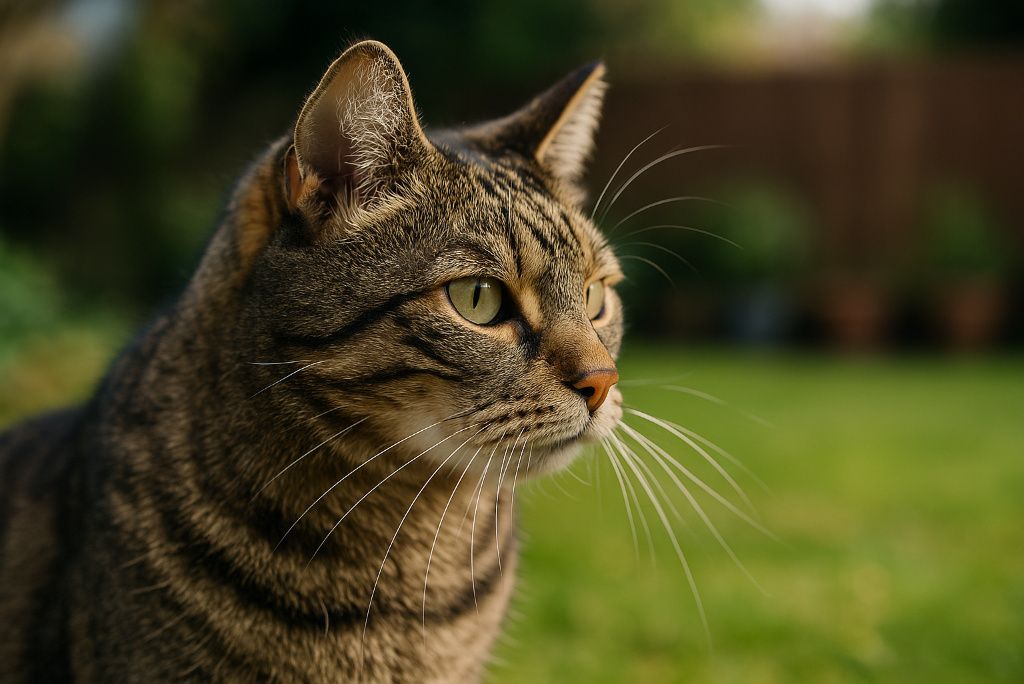
Forward-facing whiskers in cats often indicate curiosity, hunting mode, or playful intent, while whiskers pulled back signal fear, defensiveness, or discomfort. Dogs’ whiskers aren’t as expressive but can twitch when sensing nearby objects or subtle changes in airflow. Observing whisker position during feeding, play, or gentle interaction can reveal comfort levels, alertness, and even readiness to explore new environments.
15. Breathing Patterns

Rapid, shallow breathing can be a sign of stress, overheating, or excitement, while slow, steady breaths indicate relaxation and safety. Panting in cats is rare and usually means stress, pain, or heat; seek veterinary advice if prolonged. Changes in breathing after exercise, play, or stressful events can give valuable clues about overall health, emotional state, and potential underlying medical concerns.
Disclaimer: This article is for informational purposes only and should not replace professional veterinary advice. Always consult a qualified veterinarian for concerns about your pet’s behavior or health.

